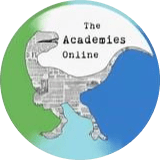Zoobiquity, a journalistic collaboration between cardiologist Dr. Barbara Natterson-Horowitz and science writer Kathryn Bowers, explores the astonishing connection between human and animal health. It tracks the doctor’s journey from focusing solely on human medicine to “a broader, species-spanning approach to the diagnostic and therapeutic puzzles of clinical medicine.”
The central claim of the book is that by making connections between animal and human medicine, we can garner vital insights that could improve our health and even save lives. Cancer, heart attacks, obesity, and STDs might be common enough ailments in the human world, but they are also prevalent in the animal kingdom. Given our common genetic backgrounds, it only makes sense that the medical field could benefit from an increase in the exchange of medical information between doctors and veterinarians.
Students in Amanda Fallon’s Veterinary Science pathway were directed to read Zoobiquity, research a topic from the book that stirred their interest, and present their findings in a PowerPoint presentation to the class. There were plenty of topics to choose from, including eating disorders, fainting, addictions, heart attacks, and feather plucking, and other forms of self-injury. Ms. Fallon invited me to her classroom to observe some of the presentations, and I must say I learned some fascinating information. For instance, I came to know that anorexia can be linked to the nervous behaviors of our “animal forebears”, who lived with the constant fear of not having enough to eat – or else being eaten.

Natalie Smith speaks about toxic plants for cats.

Keeley Madison talks about fainting in both humans and animals.
written by Ms. Roberts
edited by Saanvi Gutta and Tryphena Pilli


Be the first to comment on "Zoobiquity"